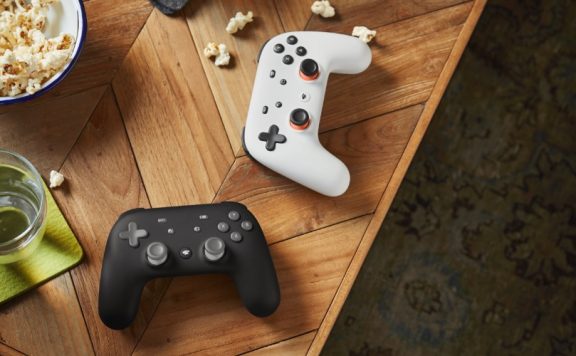I’m not ashamed to say that I love Stadia. I’ve been allowed on any number of occasions – much to my co-workers incredulity – to wax lyrical on why this console-less console deserved a second, third, or even fourth look, but the time has come to face the facts. I wasn’t just barking up the wrong tree, I was in the next forest over and my dog had lost its voice. Nobody was really surprised last week when Google announced that it was shuttering the streaming service, but I’ve got to take the opportunity to wish it a fond farewell – almost nobody else will.

Google got nearly everything wrong with Stadia at the outset, and it went downhill from there. Launching without niceties like achievements wasn’t the crime that some tried to argue it was, but a host of Stadia’s key selling points like state sharing and multi-window multiplayer weren’t there on day one, or indeed in any of the following months, when they should have been. It meant that Stadia came out the oven half-baked.
Those distinctive features could have been a difference maker, but the more common doubt was over how remote gaming could compare to a PlayStation or Xbox under your TV. Stadia works remarkably well. Yes, it needs a stable internet connection, but how many of us don’t have internet at home, work, and most of the places we visit? The ability to hop between TV, desktop, laptop and phone was probably my favourite feature, and thanks to Ubisoft’s cloud saves I could even bounce over to my Xbox Series X play for games like Assassin’s Creed Valhalla. I’m pretty close to replicating that experience these days with Xbox Cloud Gaming, or mixing some PC desktop play with a Steam Deck, but Stadia did it years ago, and crucially without any expensive hardware. None.
The problem, fundamentally, was the games and their pricing. There’s always been a question about digital ownership, but people are more likely to trust the established hands of Sony, Microsoft or Nintendo rather than Google and their track record of ditching projects in their infancy made it nigh-on impossible. Google Cemetery has the average lifespan of a Google project at 4 years. Stadia is going to bring that average down a bit…
With users getting full refunds for hardware and game purchases (but not for subscriptions), one of the most disappointing things about the shutdown is that developers had no idea it was coming. Some developers were just 2 days away from a release, some coming in a month, others depending on a paycheque for a release that’s now impossible.

They wanted you to pay full price as well. I’ve never quite understood how digital games cost more than a physical product that has to be manufactured and distributed, and which you can easily sell on once you’re done, but that’s not a question that’s solely Google’s to answer. I guess that those games being at the mercy of the internet gods was the first, second, third and final straw.
One of the high spots came with Stadia Pro – Google’s answer to PlayStation Plus and Games with Gold, as opposed to Game Pass. The steady supply of games was the perfect solution to Stadia’s setup, while crossplay for multiplayer greats like PUBG and the inclusion of extras like every Destiny 2 expansion should have earned it more kudos than it ever got. The fact that you needed that sub to get the best 4K resolution and surround sound was yet another misstep, though.
While the technology absolutely worked, and only the most sensitive or competition-focussed gamer would ever notice the difference in input lag, Stadia never quite achieved the results it should have. It didn’t live up to the promise of 4K – though as it turns out the PS5 and Xbox Series X typically forego that target too – and it certainly didn’t pump out visuals on a par with the new home consoles. Did that matter? In my experience no. The fact Cyberpunk 2077 was in a playable state at launch, was a rare win for the platform, and one that should have had more impact. It was already far too late though.

I’ll mostly miss the controller. Yes, I know I can still wire it up and use it on PC, but the Stadia controller has become one of my favourite wireless input devices, and it really should be given a Bluetooth updated to avoid as much e-waste as possible. Is it the wide trigger buttons? The clicky face buttons? The symmetrical analog sticks? It’s hard to say, but my blue and orange launch model is royally scratched and dinged up thanks to a coating that shows up every mark, and that makes me like it even more.
So farewell Stadia. I love an underdog, but Google made sure you were the mongrel beneath even that status. Owners have until January to finish up their final playthroughs – I still have the exclusive Wavetale to see the end of – and there’s some efforts to help people rescue their save files, but I imagine most people will just move on straight away. My personal recommendation? An Xbox Series S and Gamepass. It’ll give you a great library, let you stream a bunch of games, and while it’s not quite as small as a Google Chromecast, it’s pretty damn dinky. Oh, and games are still coming out for it. That’s probably a good thing.





Nate
When Stadia was first announced, I thought it had the potential to change our relationship with consoles forever. The idea of being able to log into your console from any device, similar to Netflix, was really exciting. Sadly, pricing aside, it just didn’t work particularly well. Even with my fairly decent connection, the intermittent lag made it distracting at best and unplayable at worst.